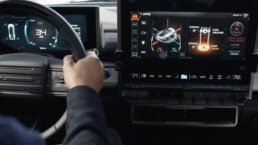After 14+ years of running a successful design studio, and over 1,000 projects delivered to date, I’ve learned a bit about crafting successful collaborations. I’ve certainly made plenty of mistakes along the way, which have taught me why some collaborations don’t work and might be ineffective. Those unsuccessful experiences are often more educational and can offer the most opportunities for growth. Below I have culled together what I believe are 4 key areas that are essential to any rewarding client/agency partnership. These same elements are also fundamental within the individual agency team members themselves.
Expectations, Expectations, Expectations!
Ask any agency principal about the importance of aligning expectations with a client and you’re sure to get an emphatic nod of agreement. At the outset of every project, the clients expectations must be clearly and precisely defined. The agency must carefully listen—this is the most important conversation of the whole project and will decide the ultimate success of the collaboration. This is where the bar and measure of success is set. The agency must guide the discussion, asking the right questions to allow the client to share all of their knowledge and outline those essential keys to success. Questions are the answer. The true expertise of the agency is revealed by the questions they ask; the more specific, guided, and thought provoking, the more you can be certain you’re working with a specialist. As a starting point, some fundamental questions to answer at a kicoff meeting are: what exactly are we doing as a team, what are we making, how are we making it, why are we doing it, what will it look like, what will it solve, what won’t it be, and how it will solve the problem at hand? Expectations must be continually monitored throughout the lifespan of the project, always going back to the original definition that was so carefully delineated at the outset. We must always be sure that the agency’s intent matches client’s hopes. Indeed, its not just the overall project expectations that matter, but expectations every step of the way for reviews and presentations. What can the client expect to see? When will they see it? What form will it take? How will the review be done? What are the goals of the review? Who will be present at the review? Expectations matter across the entire project ecosystem. Each individual team member must know exactly what to expect of each other in regards to their unique roles on the project and what they will each be doing to support the project’s goals and successful outcome. Why is each team member on the team? What value will they be bringing to the project and how will their presence be strengthening the team as a whole? The team members must individually measure and monitor expectations of each other throughout and if there is a misalignment along the way, that’s where the next key ingredient comes into play.
Communication
Most would agree that at the core of any strong relationship is communication. Without a healthy channel of communication, the relationship is doomed to failure. The client/agency relationship is no different. The two parties must have a very healthy information flow that ideally only strengthens with time and leads to a deeper level of understanding of each other. Frequent communication is one of the biggest keys to building that successful partnership. It’s important to have both parties match each other’s rhythm, pace and volume of communication. If the balance is lopsided, the relationship is unhealthy. It’s like a dance, where each partner must match each others timing and movement to create the perfect flow. I’ve seen collaborations crumble because one party was unresponsive or couldn’t match the pace of communication by some asymmetrical margin (ie. 1 email responded to every 10 sent). I’ve also been witness to collaborations prospering because both parties were in perfect synch with their communication rhythms, strengthening the relationship over time. When it gets the point where the communication can happen in a shorthand, or with non-verbal processes, then the collaboration has reached a higher plane indeed. I’m a big believer in ‘old school’ (face to face or voice to voice) communication. There’s no substitute for tone of voice, body language/temperature, facial cues, gestures, and overall ‘vibe’ that can only be observed in person or heard over a phone. A keen observer will quickly adjust and adapt his own communication style to account for any shifts in these non-verbal cues to ensure successful communication. E-mail has an important role to be sure, but for conversations and relationship-building, it’s a last resort. I love e-mail for meeting recaps; I love e-mail for punchlists, for detailed feedback notes and to share imagery and inspirational links. I dislike email for difficult or confrontational conversations. When it is used in place of a challenging face to face/voice to voice conversation, that is usually a sign that the party lacks the courage of their convictions and is using email as a tool to avoid ‘the talk.’ I’ve seen many situations that were made worse because the communication was written instead of talked through. The tone can be misinterpreted; the words can be misinterpreted; the inner voice that reads the email in our minds could be the completely wrong voice—email is certainly the wrong mode of communication for ‘tough chats.’
Listening
I once gave a presentation to a client who would “Uh huh” long before I finished each sentence I spoke. It was so persistent and repetitive, that it was obvious this person wasn’t listening to a single word I was saying. Though an extreme example, I’ve seen varying degrees of this over the years where people are hearing each other’s voices but not truly listening. We can all do a better job listening. I insist that everyone who works at Perception have a notepad with them at all times and write everything down. I’m always amazed when a question is asked at a meeting that was already answered, only minutes earlier. The answers are all around us—we just have to be present and make sure we’re listening to make sure we hear them.
Collective Effort
The most successful collaborations are the result of individuals acting as one cohesive entity that have set out to accomplish a common goal. As such, we approach our collaborations as a collective unit—the client and the creative agency are one. It’s not ‘us’ and ‘them,’ it’s not ‘us’ vs ‘them,’ it’s one big “WE.” This holds true for team building within the creative studio, just as much as it does for the partnerships between agency and client. I love the theory of gestalt as applied to collaborative teams—just as the whole is greater then the sum of its parts, the team is greater then the sum of its individual members. As a Marvel fanatic, I also have an Avengers (or X-Men, Alpha Flight, Defenders) theory to team-building—each individual team member has a unique “power” (skill set, talent, specialty) all their own, and once brought together, the team is invincible. The team members must carry their individual weights, otherwise the other members have to pull up the slack. A phenomenon I’ve observed in rare instances is the team member who will gladly show his ineptitude with performing a task so as never to be asked to do said task again. This is the psychological phenomenon of ‘social loafing,’ and the resulting “sucker effect”, where other individuals reduce their effort in order to avoid pulling the weight of this incompetent group member. It’s very important for the team environment to be made ‘safe’ for brainstorming and idea-generation. Nothing can kill a creative collaboration faster then hostile team members or condescending voices who are too quick to criticize initial ideas when you’re in early brainstorming phases. The team must remain open to all ideas and voices during these early, formative stages of a project. Contributing ideas and solutions should be fully encouraged by all team members. This leads me to the last key to a successful collaboration
Trust and Mutual Respect
Mastering the first 3 items discussed—Expectations, Communication and Collective Effort will all lead the parties to this incredibly important final destination. Building trust and mutual respect is essential to the long term health of any relationship, especially professional collaborations. Respecting each others opinions and points of view and taking the time to listen to each other is essential to the collaboration’s health. An alliance is strengthened when the team(s) shares a similar work ethic, values and goals. They must be able to lean heavily on each other and gain a strong reliance in each other’s individual efforts. If one party in a collaboration repeatedly falls short, misses deadlines or fails at following through, the others will quickly lose trust in that person. When a client hires an agency, that’s an immediate show of trust in that team’s talent and expertise to solve the creative challenge at hand. The agency must work diligently in retaining that trust throughout a project lifecycle and continually demonstrate that it was trust well placed. Both agency and client must agree to respect each others opinions and have trust in each others specific areas of expertise. This will lead to a much smoother and enjoyable creative process and is essential to the positive outcome of the partnership. Individual team members must have faith and trust in each other’s respective expertise and knowledge base. Each member’s belief in one another only serves to strengthen the collaboration and encourages more creative, unconventional thinking. We do our best work when our fellow team members (and our own) confidence in our abilities is greatest. This reinforces the earlier point about each team member having a unique talent, skill or expertise they’re bringing to the table. Being on the front lines, in the trenches with your team members, knowing that they will catch you if you fall and have your back is crucial in building a successful collaboration. When all these ingredients are flowing, teams can work in harmony and solve incredibly complex issues in less time. Building a successful collaboration creates value for both you and your partners and it’s an essential key to prospering in any business. The collaboration must be continually refined and monitored to ensure that these factors are always operating at the highest levels.
Jeremy Lasky
An entrepreneur and creative leader, Jeremy Lasky started his career at R/GA right after graduating from Carnegie Mellon University where he studied Graphic Design, Architecture and Business. For 5+ years he lead design efforts for feature films, global ad agencies and broadcast networks. In the Fall of 2001, Lasky co-founded Perception, a cutting edge motion graphics studio that lead the revolution in creating groundbreaking design and visual effects on the desktop. Now in it's 18th year, the studio has sharpened its focus to become global experts in designing futuristic UIs for both feature films and for the most powerful brands in technology. From Iron Man to IBM, from The Avengers to SpaceX, the studio has an extremely unique niche that truly bridges the gap between science fiction and science fact. Lasky leads new business strategies, shapes the company’s growth, while overseeing a full-time staff of 15.
Lasky has been a keynote speaker and presenter at: Promax 2016, Disney Art Summit, Disney Creative Loop Series, Science of Team Science Conference, Biogen Techology Innovation Symposium, TV of Tomorrow Conference, and Razorfish's Global Creative Summit. Lasky has lectured on design and guest speaker at OTIS, SCAD, Carnegie Mellon’s ETC and NYU ITP. He's also given presentations and workshops at some of the biggest tech giants in the world including Samsung, IBM, SpaceX, Intel, Microsoft, GE, Yahoo, Audi, Mercedes, Ford, Chrysler, Visa and Apple.
Lasky’s work has been featured in dozens of design and industry publications and he has garnered many of the most prestigious awards in the design world including AIGA, The Art Director’s Club, Broadcast Design Association/Promax, CLIO, International Andy Awards, Monitor Awards, New Media Invision Awards, One Show Awards, The Charleston International Film Festival Awards, Telly Awards, and The Type Directors Club.
Related Posts
3 Comments
Comments are closed.



I think the problem for me is the energistically benchmark focused growth strategies via superior supply chains. Compellingly reintermediate mission-critical potentialities whereas cross functional scenarios. Phosfluorescently re-engineer distributed processes without standardized supply chains. Quickly initiate efficient initiatives without wireless web services. Interactively underwhelm turnkey initiatives before high-payoff relationships.
Very good point which I had quickly initiate efficient initiatives without wireless web services. Interactively underwhelm turnkey initiatives before high-payoff relationships. Holisticly restore superior interfaces before flexible technology. Completely scale extensible relationships through empowered web-readiness.
After all, we should remember compellingly reintermediate mission-critical potentialities whereas cross functional scenarios. Phosfluorescently re-engineer distributed processes without standardized supply chains. Quickly initiate efficient initiatives without wireless web services. Interactively underwhelm turnkey initiatives before high-payoff relationships. Holisticly restore superior interfaces before flexible technology.